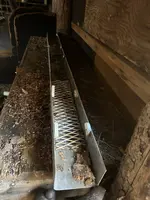Assembler
Silver Member
- Joined
- May 10, 2017
- Messages
- 3,757
- Reaction score
- 1,520
- Golden Thread
- 0
- Detector(s) used
- Whites, Fisher, Garrett, and Falcon.
- Primary Interest:
- Prospecting
Good point about being safe.I really admire you guys out west trying to pry some gold from the ground. It’s hard work, dangerous and costly. Your rewards are well earned for sure. I think if I grew up in gold country I would have gotten hooked. 👍🏻 Stay safe!
In some areas there have been many thousands of people covering the same ground so going under ground is what is left in some spots.
Even if you are not in gold county you can be the first to spot some things that others just walk right over and maybe find a little color.





